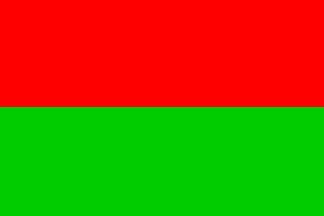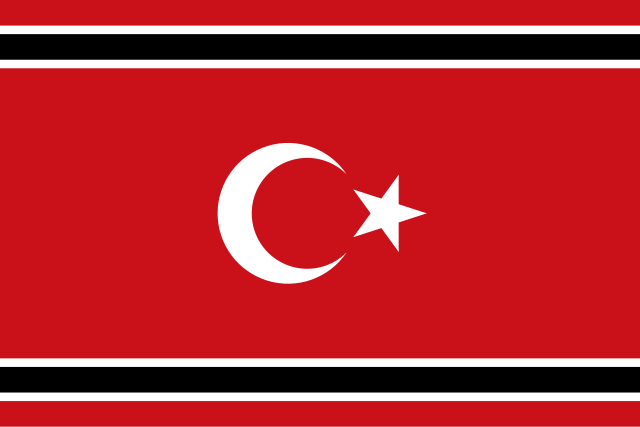In the Federation of Lillorainen, there are no banned flags, but like in most countries, some are frowned upon, among which are flags displaying symbols of fascism, communism, or any religious or other form of extremism.
Aside from these, the most 'controversial'
Lillorainian flag is the flag of the Lillorainian Federal Republic, which was founded in 1948 and lasted until 1976 (de facto) or 1981 (de jure). While the contemporary Service Flag is clearly inspired by it (as both contain certain national symbols), displaying the 'original' flag of the LFR in public won't gain you a lot of friends.
For comparison ...
The LFR covered the territory of the modern States of Storöer, Sigurdsland, and Kongsöer, the Territories of Bargrade, Möngheim, Styrup, and Bordeslee (today parts of the State of Rigesöer), Southern Fyleria (today part of the Fylerian Free State), as well as the Kronstadt District (today part of the State of Thulia). The Free State of Visholm was considered an associated part, but de facto independent. Thus, it covered more than half of the territory of the modern Federation by 1970.
By 1970, the LFR had approximately 41 million inhabitants. The capital city was Nörishamn, the largest city was Lysköping.
The LFR has been the first attempt in the history of any Lillorainian body politic to establish a full democratic system by Western standards, and its history is often cited as the primary reason why the democratic experiment didn't turn out too well in the context of Lillorainen's culture and society. After the first elections in 1948, the parliament's shares were almost completely (78% in total) split up by three parties, the Lillorainian National Party (LNP), the Lillorainian Liberal Union (LLU), as well as Socialist Party of Lillorainen (SPL). The remaining 22% were shared by smaller parties, among them the Lillorainian Technocratic Union (LTU), the Regionalist Coalition (RC), as well as the Reform Party of Lillorainen (RPL). The LNP and the LLU ruled in a coalition, together making up 54.3%.
Already in the first years, it occurred to the people, that the Members of Parliament spent a lot of time engaging in ideological disputes (to the degree, that parliament brawls were not uncommon), and considerably little time actually fixing issues. The Nationalists and Liberals eventually used a loophole in the constitution to outlaw the SPL in 1951. In light of the huge popularity of the Technocratic Movement in those days, the people reacted by giving more votes to the LTU in 1952 - while it didn't suffice to actually make them a government party, it became the strongest opposition party (26.4%) against the National Liberal Coalition. The coalition quickly radicalized itself, using legal and semi-legal means to further strengthen its power. The populace reacted by voting opposition parties into their state legislatures, which, however, resulted in these serving as blocking instruments. Over the time, voters' participation shrank due to apathy, with its bottom reaching 43.2% in 1964. As a result of the powerlessness of the Nationalists, they started becoming more authoritarian, manifesting their ideology of a strong Lillorainian state, aligned with other nationalist powers of the time such as Shikonjima, Mairandra, and Ahjada, while positioning themselves against socialist and liberal powers, even those with traditionally good ties with the Lillos, such as Shamsiyya and the Moana-Nui-Islander states, whom most non-LFR states kept good relations with. After the 1968 protests in Lysköping and other university cities, the LFR soon began to use force against dissidents. As this helped little to keep the people together, the LFR went over to its last resort - territorial expansion. In 1974, they invaded the non-LFR territories of Rigesöer and Southern Nessovia, which quickly resulted in the Lillorainian Civil War.
As an aftermath, the Federation unified under the banner of the new ideology named Federative National Meritocracy in 1981, unifying
all ruling parties of the Constituent National Assembly (as in,
all remaining and new-founded parties) into the Meritocratic Unity Party of the Federation of Lillorainen (MUPFL), ensuring a strict competence standard of its Rulers while maintaining democratic control instruments.
Due to this failure of the LFR, symbols associated with it are usually frowned upon in Lillorainen nowadays.









